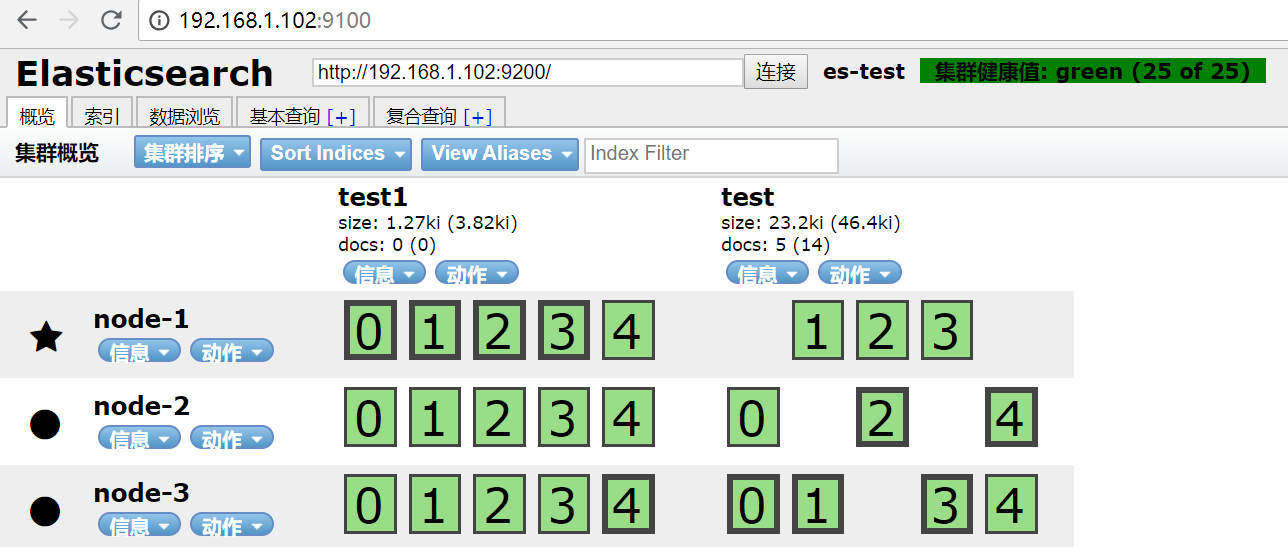一、修改配置文件
1.节点配置
1.vim elasticsearch.yml
# ======================== Elasticsearch Configuration ========================= # # NOTE: Elasticsearch comes with reasonable defaults for most settings. # Before you set out to tweak and tune the configuration, make sure you # understand what are you trying to accomplish and the consequences. # # The primary way of configuring a node is via this file. This template lists # the most important settings you may want to configure for a production cluster. # # Please consult the documentation for further information on configuration options: # https://www.elastic.co/guide/en/elasticsearch/reference/index.html # # ---------------------------------- Cluster ----------------------------------- # # Use a descriptive name for your cluster: # 集群名称 cluster.name: es-test # # ------------------------------------ Node ------------------------------------ # # Use a descriptive name for the node: # 节点名称 node.name: node-1 # # Add custom attributes to the node: # node.attr.rack: r1 # # ----------------------------------- Paths ------------------------------------ # # Path to directory where to store the data (separate multiple locations by comma): # path.data: /home/esdata/data # # Path to log files: # path.logs: /home/esdata/log # # ----------------------------------- Memory ----------------------------------- # # Lock the memory on startup: # bootstrap.memory_lock: false bootstrap.system_call_filter: false # # Make sure that the heap size is set to about half the memory available # on the system and that the owner of the process is allowed to use this # limit. # # Elasticsearch performs poorly when the system is swapping the memory. # # ---------------------------------- Network ----------------------------------- # # Set the bind address to a specific IP (IPv4 or IPv6): # network.host: 0.0.0.0 # # Set a custom port for HTTP: # http.port: 9200 # # For more information, consult the network module documentation. # # --------------------------------- Discovery ---------------------------------- # # Pass an initial list of hosts to perform discovery when new node is started: # The default list of hosts is ["127.0.0.1", "[::1]"] # 节点主机 discovery.zen.ping.unicast.hosts: ["192.168.1.102","192.168.1.103","192.168.1.104"] # # Prevent the "split brain" by configuring the majority of nodes (total number of master-eligible nodes / 2 + 1): # 主节点数量 discovery.zen.minimum_master_nodes: 1 # # For more information, consult the zen discovery module documentation. # # ---------------------------------- Gateway ----------------------------------- # # Block initial recovery after a full cluster restart until N nodes are started: # 节点发现多少开始恢复 gateway.recover_after_nodes: 3 # # For more information, consult the gateway module documentation. # # ---------------------------------- Various ----------------------------------- # # Require explicit names when deleting indices: # action.destructive_requires_name: true http.cors.enabled: true http.cors.allow-origin: "*"
其他节点文件除了节点名称不一样,其他都一样。
2.验证
1.启动三台机器ES和head
2.访问head地址查看

集群一共两个三个节点,test有5分片,每个分片两个副本,停掉节点二,集群副本0,2,4不见了
